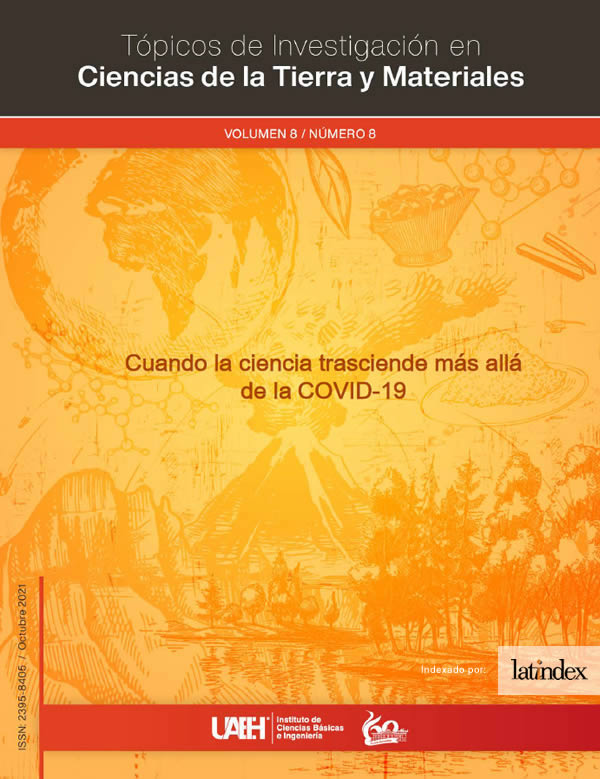Electrochemical evaluation of a Ni alloy as an electrocatalyst to produce H2
Abstract
An electrochemical study is presented to evaluate a Ni alloy used as a cathode and determine its viability in the production of hydrogen in a basic and acid electrolytic medium. A treatment was applied to the surface of the Ni alloy using a 0.6 M FeCl3 solution to provide a greater surface area. For comparison purposes, an A304 stainless steel electrode was also used as the cathode. Cyclic voltammetry and chronoamperometry tests were carried out in a range of potentials between -2.0 to 0.0 V, to evaluate the current density during the evolution of hydrogen. It was determined that the current density obtained in the basic medium was much lower than with the acid medium, in both electrodes analyzed. While, with the Ni base alloy, there were lower overpotentials for the initiation of the hydrogen evolution reaction, as well as a higher current density than with A304 stainless steel. Furthermore, an increase in current density was observed when the treatment was applied to the Ni base alloy, attributed to an increase in the catalytic surface area of the alloy.
Downloads
References
Able, B. C., (1945). Nombre del artículo. Nombre de la revista 35, 123–126. DOI: 10.3923/ijbc.2010.190.202
Liu, K. H., Zhong, H. X., Li, S. J., Duan, Y. X., Shi, M. M., Zhang, X. B., ... & Jiang, Q. (2018). Advanced catalysts for sustainable hydrogen generation and storage via hydrogen evolution and carbon dioxide/nitrogen reduction reactions. Progress in Materials Science 92, 64-111. https://doi.org/10.1016/j.pmatsci.2017.09.001
Solorsa, F. O. (2015). Conversión y Almacenamiento de Energía (CAE). En C. F. Almeraya, 30 Años Impulsando la Electroquímica en México (págs. 180-199). Monterrey, Nuevo León, México: Sociedad Mexicana de Electroquímica. Obtenido de: http://www.smeq.org.mx/frames/Libro%20de%20Aniversario%20de%20la%20SMEQ%20.pdf
Isgró, M. (2015). El hidrógeno como vector energético, su obtención por electrólisis. Recuperado de: https://scholar.google.es/scholar?hl=es&as_sdt=0%2C5&q=El+hidr%C3%B3geno+como+vector+energ%C3%A9tico%3A+su+obtenci%C3%B3n+por+electr%C3%B3lisis.+La+Plata%3A+EnAlTecs+SITEMA&btnG=
Bañuls Escrig, I. J. (2018). Caracterización de electrodos de níquel dopados con nanopartiículas de paladio para la obtención de hidrógeno (Doctoral dissertation, Universitat Politècnica de València). Recuperado de: https://scholar.google.es/scholar?hl=es&as_sdt=0%2C5&q=Ba%C3%B1uls%2C+S.+I.+%28Diciembre+de+2017%29.+Caracterizaci%C3%B3n+de+electrodos+de+n%C3%ADque+dopados+con+nanopart%C3%ADculas+de+paladio+para+la+obtenci%C3%B3n+de+hidr%C3%B3geno+%28Tesis+Doctoral%29.+Valencia%2C+Valencia%2C+Espa%C3%B1a%3A+Universidad+Polit%C3%A9cnica+de+Valencia.&btnG=
Gomez, M. J., Franceschini, E. A., Corti, H. R., & Lacconi, G. I. (2018). Síntesis y propiedades de electrodos de níquel/grafeno para generación de hidrógeno. Matéria (Rio de Janeiro), 23(2). https://doi.org/10.1590/S1517-707620180002.0462
McCarty, R. D., Cox, K. E., & Williamson, K. D. (2019). Hydrogen: Its Technology and Implications: Hydrogen Properties. CRC Press. https://www.taylorfrancis.com/books/mono/10.1201/9780429487170/hydrogen-technology-implications-robert-mccarty-kenneth-cox-williamson
Zhang, T., Wu, M. Y., Yan, D. Y., Mao, J., Liu, H., Hu, W. B., ... & Qiao, S. Z. (2018). Engineering oxygen vacancy on NiO nanorod arrays for alkaline hydrogen evolution. Nano Energy, 43, 103-109. DOI: https://doi.org/10.1016/j.nanoen.2017.11.015
Zeng, M., & Li, Y. (2015). Recent advances in heterogeneous electrocatalysts for the hydrogen evolution reaction. Journal of Materials Chemistry A, 3(29), 14942-14962. DOI: 10.1039/c5ta02974k
González-López, M. A., Reye-Cruz, V. E., Cobos-Murcia, J. A., Veloz-Rodríguez, M. A., Urbano-Reyes, G., & Pérez-Labra, M. (2018). Effect of DSA electrode (A304| RuO2) on the electrochemical production of H2 (g). Int. J. Electrochem. Sci, 13, 10873-10883. DOI:10.20964/2018.11.58
García, J. C. (2012). Producción de hidrógeno mediante electrolizadores. Estado del arte de la tecnología. línea]. Disponible en: http://www.ingenieriaquimica.net/articulos/302-produccion-de-hidrogenomediante-electrolizadores-estado-del-arte-de-la-tecnologia-electrolizadore. [Accedido: 02-jun-2021].
A. J. Bard and L. R. Faulkner, Electrochemical Methods Fundamentals and Applications, John Wiley & Sons, Inc., (1944) 605 Third Avenue, New York, NY, United States of America.












